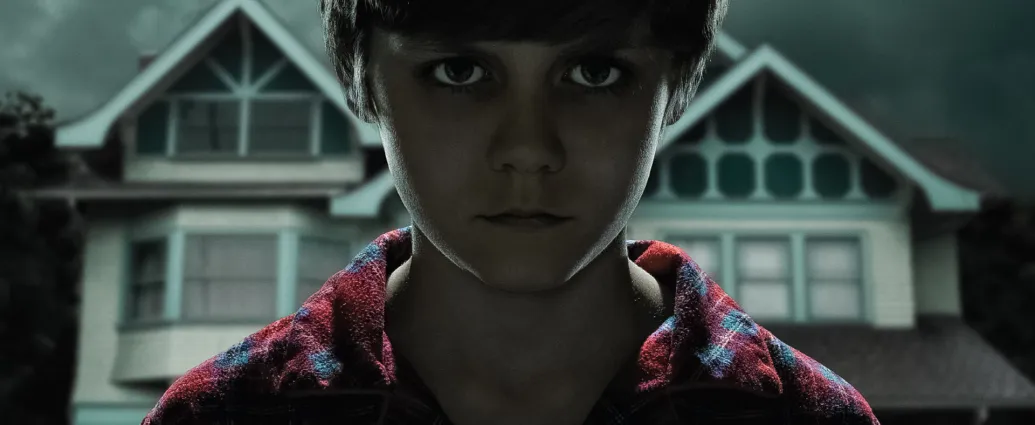For those of you who the information has not already been relayed to in some way or another, I have a fairly loyal affection for Full Moon Features‘ early catalogue, having reviewed some of them and having seen far more. They are not always perfect, and, to be frank, not many of them would be acclaimed. That does not mean I dislike them, per se, but that I have no misgivings about where they are on the totem. I look at them in a similar way to the classic Goosebumps television series, where each film is a short (about 70-80 minutes, filled with padding through opening / closing credits), simple concept with colorful characters and an absurd storyline. I dig it in that respect, and, usually, even if they’re “bad”, I am usually fascinated enough by them to overlook that.
Three weeks ago, I reviewed The Resonator: Miskatonic U on Readers Digested, a newer Full Moon Feature done as a tribute to late-director Stuart Gordon who was responsible for Empire International Pictures’ (that’s Charles Bands’ pre-Full Moon company) most revered titles like From Beyond and Re-Animator. Since I reviewed The Resonator, that means I had to start a new subscription to Full Moon Features’ streaming service (no free screeners for us yet, I’m afraid), and, when that happens, I like to use that as an opportunity to share my thoughts on some of the earlier films in their filmography and make the most out of that month subscription.
I could have reviewed either of the Stuart Gordon’s films I mentioned earlier and it would have aligned better with The Resonator, as that film acts as a spiritual successor to both of them, but, instead, I decided to tread someplace different. Although Castle Freak is not based on H.P. Lovecraft, it does draw inspirations from him and, also, does have a lot in common with Re-Animator and From Beyond. For instance, not only was the film directed by Stuart Gordon, but it brings back Jeffrey Combs and Barbara Crampton (who were in both films). The film was also written, in part, by Dennis Paoli, a frequent collaborator with Gordon.
It has been said development for Castle Freak was very unconventional. During production on another film, Stuart Gordon happened upon a poster in Charles Band’s office that featured a Quasimodo – esque man chained to a wall and inquired about it. Band replied with, simply, “Well, that’s a castle and there’s a freak.” Band offered him the chance to create the film after, conditioning only that it stick within the basic parameters of that concept. Stuart Gordon made the film for about half a million and said he had complete control of the production, including casting and a final cut for the film.
Castle Freak has a basic premise – a recovering alcoholic named John Reilly inherits a castle and travels from America to Italy, with his estranged wife Susan and his blind daughter Rebecca. Everything’s well and good, with them hoping to stay there for the short-term. However, as they are becoming acclimated, they find out that a (castle) freakish monster is locked away in the basement and is about to wreak havoc.
The cast comprised is of ready form, obviously neither Crampton nor Combs is a slouch, meanwhile, Jessica Dollarhide does suitably in her feature debut. In some respects, I often associate Jeffrey Combs with Full Moon or Empire the same way I do Peter Cushing with Hammer productions, with the actor usually serving as a pleasant fixture in spite any other detriment a film may have.
As an actor, at least in B-movie productions, Combs lands someplace with Bruce Campbell, very theatric and pronounced with his performances, and, really, like the product of an earlier time period. I think that melds well with the genre, but the melodramatic approach can sometimes have an adverse effect when the subject-matter is grimmer and more subdued. Whereas Combs really pops as the eccentric and enigmatic Herbert West in one film, his portrayal of the tormented John Reilly is a different breed. The answer to how Jeffrey Combs will portray the downtrodden, grittier character, grieving the loss of his son, the turmoil is has had on his family, and the challenges of alcoholism, is, however, equally exaggerated and cartoonish.
This likely plays more toward both the actor’s wheelhouse and the constraints held by the film itself, requiring a fast turnaround and production. Thankfully, his portrayal is hardly a tonal dissonance with the rest of the film, thematic, but not necessarily disciplined or precise in execution, which is about inline with where Full Moon Features is at its best. The only consequence it has I feel certain dramatic sequences, like John and Susan’s arguments about their son’s death, don’t have the emotional heft you might expect. So too does the film’s handling of plot progression and the more horrific aspects of the film.
Castle Freak has a longer runtime than what’s typically expected, running someplace around 95 minutes comparative to the standard 80 minute fare we’ve come to expect. Although such a concept sounds wonderful in theory, a company known as more compact and short-winded, allowing itself to breathe a little more, I could have done without the entire “prostitute” subplot and other contrivances.
Certain characters jump to irrational conclusions and it requires a suspension of disbelief. As our protagonists’ world is turned upside down, he starts to unravel the mystery in Sherlockian ways, tending to the film’s absurdity and making that emotional connective tissue much more distant.
The setting benefits the film. Anyone who is a fan of Full Moon Features, or, at least, Stuart Gordon, might recognize the castle from another of their films called The Pit and the Pendulum – that’s because they were both filmed at a castle owned by Charles Band. Castle Freaks may not have had as high of a budget as they may of liked, but being able to film at an actual castle is nothing to shrug at. It’s enough to create a simple, classical thematic for the film, and encourages the old-school vibe that the film carries overall.
I met the death scenes in Castle Freak with my head slightly tilted to the side and confusion. The scenes feel abrupt, playing more for shock by their perverse implication. They remind me some of Re-Animator, particularly the scene when the severed head “goes down” on Barbara Crampton’s character, only difference is, that scene was played for shock laughs, and the scene in this one is played for … shock, as well? But, like a, … darker, meaner shock.
I feel like less could have been more for this film. Boiled down to the bare essentials, Castle Freak is a classic horror storyline. The main-protagonist blames himself for the death of his son (rightfully, mind you – he drove drunk and that’s bad) and is grief-stricken, trying to piece together the shambles of his broken life and the broken home he has created. He’s an imperfect lead, his own sanity drawn into question, he is driven back to his vices, trying to make sense out of what plagues them. It is a dark tragedy, he can never undo what has been done, but, maybe, if he can stop the creature’s pursuit of his family, he can find something close to redemption. Instead, I think a lot of that is muddied by added subplots and unnecessary scenes. The runtime is not the issue, but, instead, it is what that time is spent on. Had this film narrowed its scope on its strengths, I think there is a really solid, but standard horror film.
Instead, what we have is a middling film in Full Moon Features’ catalog and a slightly less interesting fare for Stuart Gordon. It is not a bad film, and, comparatively, falls on the more positive side of the spectrum. It is not among the ones I would actively recommend, but it is not one I’d actively try to dissuade anyone from either. In a lot of ways, it represents Full Moon Features at its best, flawed but passionate craftsmanship (often stricken by financial limitations or deadlines more than lack of ambition), with old-school, and campy but straight-faced sensibilities.





